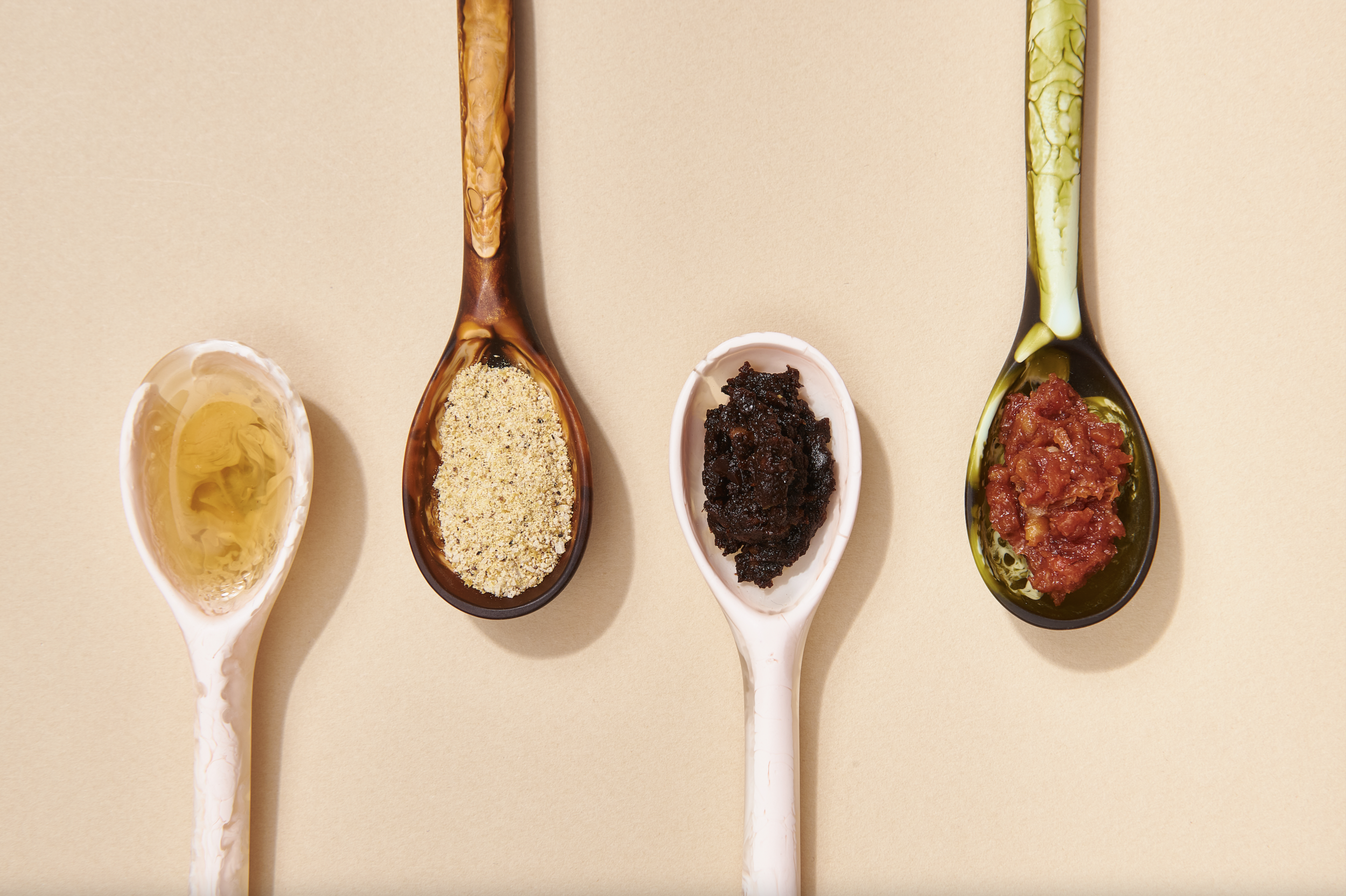
about.
cura. is a range of koji-based seasonings made by Tony Schifilliti in Stanmore, Sydney. By making umami less technical, our pastes, liquids and salts are an easy way to enhance flavour. Made with everyday use in mind, you can get creative by adding a spoonful here and there to enrich your home cooking.
To create our seasonings, we combine traditional Japanese fermentation methods with unconventional ingredients. For example, our tomato paste is fermented like miso, but replaces cooked soy beans with semi-dried tomatoes and roasted garlic. By doing this, we create new and unique flavours that are full of umami (known for its deliciousness and feelings of satisfaction).
Our seasonings are versatile and can be used across a wide range of applications and at all stages of the cooking process. We use organic, biodynamic and locally sourced (where possible) beans and grains. Our products are unpasteurised, allowing enzymes and bacteria to aid gut health and digestion. If kept refrigerated they can last for years, but as a live product, we suggest consuming sooner rather than later.
Overall, cura. seasonings are a fun, healthy way to make simple cooking really tasty.
Tony is currently the Head Chef at Sixpenny, a 3 Hat restaurant in Sydney, where cura. seasonings are produced and used throughout their menu.
What is koji?
Koji refers to any substrate, such as rice, barley, or soybeans, that has been inoculated with a species of fungus called Aspergillus oryzae. The inoculated grain contains enzymes, that when mixed with a food source, start to digest and absorb its nutrients. This process transforms simple ingredients, such as soybeans, salt and koji, into a complex sweet miso full of umami.
How do you make koji?
The first step is to create the right conditions for the fungus to thrive. This is achieved by constructing a chamber that facilities control of humidity, temperature and airflow.
To create the seasonings, we wash and soak the grains. The amount of soak time depends on the actual grain in question, but is generally between 4-24 hours. Once soaked, the grains are strained and steamed to an al dente texture.
When the grains have finished steaming, it’s time to inoculate them. We allow them to cool to around 40 degrees before adding the Aspergillus oryzae (koji) spores. It’s important to get the temperature right, as heat will kill the fungus. The grains are then transferred into the chamber and allowed to incubate up to 48 hours. During this time, the grains are checked and stirred to ensure they remain in optimal growth conditions.
Just before the fungus goes to spore, which is the end of the fungus’ lifecycle, the grains are harvested. If successful, we have a fresh batch of koji which can now be used in many ways.
What other products involve koji fermentation?
While koji may seem a bit niche, many familiar products use this process. Miso, soy sauce, sake, mirin, sochu and shio koji are the traditional six. There is also amazake, a sweet rice beverage, that is popular in Japan to maintain good gut health.
What differentiates cura. from traditional koji-based ferments?
The ingredients we use make our seasonings unique. We use traditional methods and techniques to find delicious flavour combinations which develop over time through fermentation. For example, black garlic is delicious on its own - imagine what its like when mixed with koji and fermented for 10 months! You get a complex, slightly sour and well rounded paste which can be used in many ways.

